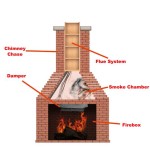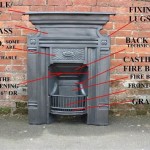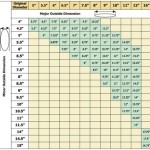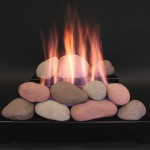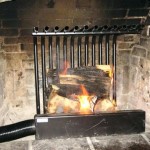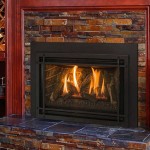Wood Fireplace Fan: Enhancing Efficiency and Comfort
Wood fireplaces offer a captivating ambiance and a source of supplemental heat during colder months. However, a significant portion of the heat generated by a wood fireplace often escapes up the chimney, reducing its overall efficiency and potentially leading to uneven heating throughout a room. A wood fireplace fan, also known as a stove fan or heat-powered stove fan, is a device designed to address this issue by circulating warm air more effectively, improving heat distribution, and maximizing the heating potential of a fireplace.
These fans operate without the need for batteries or external power sources, making them an environmentally friendly and cost-effective addition to a wood-burning fireplace setup. The underlying principle involves thermoelectric technology, which converts heat energy directly into electrical energy to power the fan's motor. This article will explore the mechanisms, benefits, performance factors, selection criteria, placement considerations, and maintenance requirements associated with wood fireplace fans.
Understanding the Mechanics of Wood Fireplace Fans
The operation of a wood fireplace fan relies on the Seebeck effect, a thermoelectric phenomenon where a temperature difference between two dissimilar electrical conductors or semiconductors creates a voltage difference between them. This voltage difference can then be used to drive an electric current. In a wood fireplace fan, a thermoelectric generator (TEG) module is utilized, typically comprising two ceramic plates with a series of interconnected thermocouples sandwiched between them.
One side of the TEG module is placed in direct contact with the hot surface of the wood stove or fireplace. The opposite side of the TEG module is fitted with a finned heat sink designed to dissipate heat efficiently. As the temperature of the stove surface increases, a temperature differential develops across the TEG module. This temperature difference generates a voltage, which drives a small electric motor connected to fan blades.
The fan blades then begin to rotate, drawing cooler air from the floor level and propelling it across the heated surface of the fireplace. This process effectively redistributes the warmed air into the room, creating a more uniform temperature profile. The fan's speed is directly proportional to the temperature difference across the TEG module. As the stove surface temperature increases, the fan spins faster, circulating more air. Conversely, as the stove cools down, the fan slows down and eventually stops when the temperature difference is insufficient to generate enough power.
The design of the fan blades is critical for maximizing airflow. Blades are typically optimized for efficient air movement with minimal noise. The size and angle of the blades are carefully considered to ensure effective heat distribution without creating excessive turbulence or draft.
Advantages of Using a Wood Fireplace Fan
The incorporation of a wood fireplace fan provides several benefits, contributing to both improved heating efficiency and enhanced user comfort. These advantages stem from the fan's ability to redistribute heat more effectively and reduce heat loss.
Improved Heat Distribution: Without a fan, the heat generated by a wood fireplace tends to rise and accumulate near the ceiling. This creates a significant temperature gradient within the room, with the upper areas being considerably warmer than the lower areas. A wood fireplace fan actively circulates the heated air, pushing it horizontally into the room and mixing it with the cooler air at floor level. This results in a more even temperature distribution throughout the space, eliminating hot and cold spots and enhancing overall comfort.
Increased Heating Efficiency: By actively circulating the warm air, a wood fireplace fan helps to extract more usable heat from the fireplace. Without the fan, a substantial portion of the heat generated is lost up the chimney. The fan ensures that a greater percentage of the heat remains in the room, contributing to increased heating efficiency. This can translate into reduced fuel consumption, as less wood is required to maintain a desired room temperature, leading to cost savings over time.
Reduced Fuel Consumption: The increased efficiency provided by a wood fireplace fan directly translates to reduced fuel consumption. Since more heat is retained in the room and distributed evenly, the fireplace does not need to burn as intensely or for as long to achieve the same level of warmth. This not only saves on wood costs but also reduces the environmental impact associated with wood burning, such as emissions and deforestation.
Quieter Operation: Modern wood fireplace fans are designed for quiet operation. The fan motors are typically low-noise, and the fan blades are engineered to minimize turbulence and noise generation. This ensures that the fan does not detract from the ambiance of the fireplace or disrupt conversations. Some high-end models feature noise-dampening technology to further reduce operational noise.
No Batteries or Electricity Required: A key advantage of wood fireplace fans is their self-powered operation. They do not require batteries or an external power source, making them inherently energy-efficient and environmentally friendly. This eliminates the need for replacing batteries or dealing with power cords, simplifying installation and operation. The self-powered nature of these fans also makes them ideal for use in areas where electricity is unavailable or unreliable.
Factors Influencing Wood Fireplace Fan Performance
The performance of a wood fireplace fan is influenced by several factors, including the stove surface temperature, the fan's design, and the room's characteristics. Understanding these factors is essential for optimizing the fan's performance and maximizing its benefits.
Stove Surface Temperature: The temperature of the stove surface is the primary driver of the fan's operation. A higher stove surface temperature results in a greater temperature differential across the TEG module, leading to increased voltage and faster fan speed. Most fans are designed to operate optimally within a specific temperature range, typically between 150°F and 650°F (65°C to 343°C). Operating the fan outside of this range may reduce its efficiency or potentially damage the TEG module.
Fan Design and Blade Configuration: The design of the fan, including the size, shape, and angle of the blades, significantly affects its airflow capacity and efficiency. Larger blades typically move more air, but they may also require more power to operate. The blade angle is crucial for optimizing airflow and minimizing noise. Some fans feature multiple blades or specially designed blade profiles to enhance air circulation.
TEG Module Efficiency: The efficiency of the thermoelectric generator (TEG) module is a critical factor in determining the fan's overall performance. A more efficient TEG module will generate more power from a given temperature difference, resulting in faster fan speed and greater airflow. High-quality TEG modules are typically made from advanced thermoelectric materials and are designed for long-term durability.
Heat Sink Design: The heat sink on the cool side of the TEG module plays a vital role in dissipating heat and maintaining a sufficient temperature difference. A larger and more efficient heat sink will allow the TEG module to operate at a lower temperature, improving its performance and lifespan. Heat sinks are typically made from aluminum or other thermally conductive materials and are designed with fins to maximize surface area for heat transfer.
Room Size and Layout: The size and layout of the room can also influence the effectiveness of a wood fireplace fan. In larger rooms, a more powerful fan may be required to adequately circulate the air. Obstacles such as furniture and walls can impede airflow and reduce the fan's effectiveness. Optimizing the fan's placement and arranging furniture to allow for unimpeded airflow can improve its performance.

Fireplace Efficiency Blowers And Why You Should Have One

6 Blade Hot Air Fan Fireplace Of Burning Wooden Box 8 Color Fruugo Nl

Why Should I Get A Fireplace Blower For My Masonry

Small Wood Stove Fan 4 Blade Fireplace For Burning Heat Powered Accessories Silent Operation Circulating Warm Air Non Electric Com

Fan Stove Wood Fans Fireplace Heat Powered With Ca

Heat Powered Fireplace Fan With Thermometer 6 Blades For Temu

Thermal Power Fireplace Fan Heat Powered Wood Stove For Log Burner Eco Friendly Four Leaf Fans Wish

Wood Stove Fan Fireplace For Burning Heat Powered Accessories Quiet Operation Circulating Warm Air China Made In Com

Fireplace Fan Cost Saving 7 Wood Burning Circulates Warm Log Burner For Efficient Heat Distribution Pellet Gray Com

Remora Flue Pipe Fan For Vitreous Stovefitter S Warehouse
Related Posts

